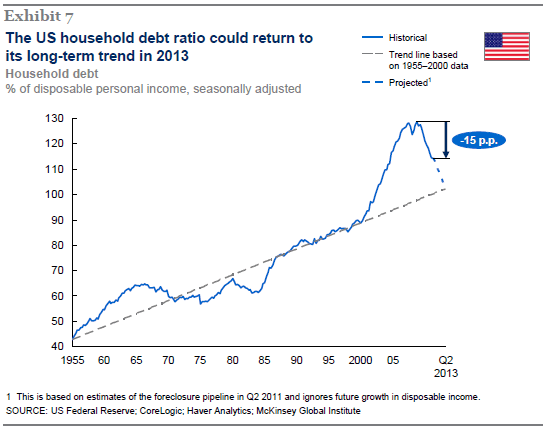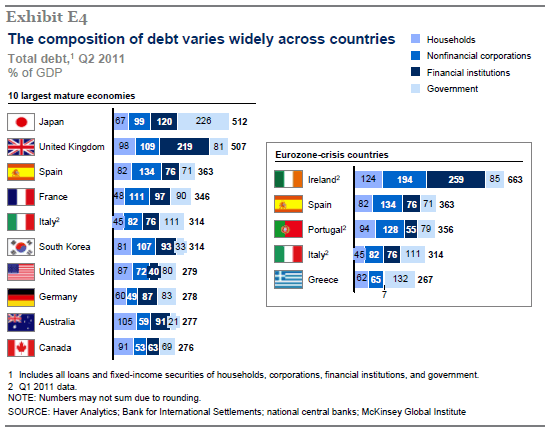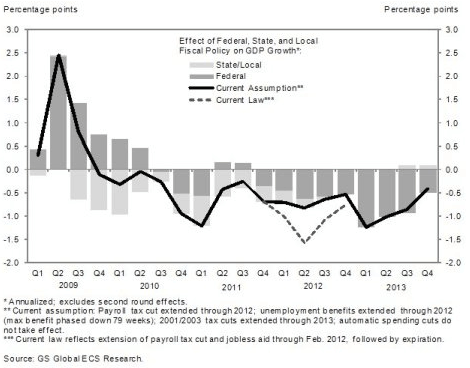
Please find below former Reserve Bank of New Zealand advisor and multiple CEO, Terry “Macca” McFadgen’s, latest ‘Maccanomics’ article, which tackles the reviving United States economy. Enjoy!
On June 20, 1782, the bald eagle was chosen as the emblem of the United States of America. Six years earlier at the Second Continental Congress thirteen colonies had declared independence from Great Britain. They decided they needed an emblem and, several committees later, the bald eagle got the nod. It was seen as an appropriate symbol because of its long life, great strength, and majestic looks. Or so the story goes.
It’s been a bad few years for the American bald eagle since Lehman collapsed. Not much strength, little majesty and an unclear lifespan. There has been no shortage of pundits predicting secular decline and the “end of another empire”.
But recently the eagle has opened one eye and may be preparing to fly high once again.
Who knows what the next few months will bring-maybe more volatility. But if we try and look through the noise here are ten reasons why Macca likes the bald eagle’s prospects:
1. Household Debt
American households are making good progress in reducing their debt levels, thanks to write-offs (foreclosures), and good wallet control. As this chart from McKinsey demonstrates, it won’t be long before normality is restored-perhaps sometime next year.

With household consumption accounting for close to 70% of GDP, the potential for a growth uplift is “in the bag”. Timing is the only issue.
2. The Banks are Fine
Thanks to the aggression with which the TARP program was pursued, American banks now have ample capital and a heap of reserves sitting with the Fed. When the history of our era is written, Paulson, Geithner, Bernanke et al will be given the recognition they deserve as saviors of the US financial system, especially for the decisive and comprehensive recapitalization of the U. S. banking system in 2008/9. (Contrast the current shambles in the EU).
Surveys of Loan Officers show that bank lending is slowly increasing as the wounds of 2008 heal and confidence rebuilds. At some point this dam will burst and it will be” follow the leader “as banks rush to rebuild their loan books. They can’t sit on reserves and deliver profit growth. The latter will win out.
3. The USA is Not Overborrowed (at least not yet)
Contrary to the prevailing hysteria about debt levels, the USA is not currently over- borrowed as a nation. This McKinsey chart tells the story well.

Total US debt (as a percentage of GDP) is only fractionally higher than Australia and not much over half of the level of the UK and Japan.
Household debt is still too high (but lower than the UK and Australia) and is coming down quickly. Corporate debt is modest. What is true is that the USA will be over-borrowed in years to come unless Medicare and Medicaid programs are shrunk and/or taxes raised. The USA has time to do this. Not much, but enough.
Talking about politics, Australian readers will be familiar with the refrain from Canberra that the Australian economy is the envy of the world and that by implication our political leaders are geniuses.
A quick look at the composition of Australia’s debt should cause you to reflect on this piece of ridiculous propaganda. Household debt is way above US levels-and indeed everyone else’s. Moreover that debt is supported by house prices which now sit at more than twice the level prevailing is most districts is the USA when measured by median price to median income ratios.(6.4 times to 3 times to be exact).
Watch your back!
4. Corporate Balance Sheets are Loaded
Corporate America is sitting on two trillion dollars of cash. Apple alone has $100billion of cash on hand.
The case for investing this cash in capital equipment is low today because demand is being satisfied out of existing resources. But that is a game limited by grandfather time. At some point-probably when there are demonstrable signs of sustained economic growth-corporations are going to start spending up large. That will set in place a virtuous feedback loop in which growing capex will feed growing demand which in turn will stimulate more capex.
Interestingly Caterpillar Corporation this week announced a capex program of $4billion for 2012, a hefty 33% increase over the 2011 level. The program is to take advantage of what it believes is a”multiyear economic upcycle”. No doubt this will be helped by a US dollar which continues to be weakened deliberately by Fed policy of which this week’s announcement (no interest rate increases expected until late 2014) is a further example.
5. Housing is Picking Up
Prior to the bust, housing and other construction comprised a very healthy proportion of US GDP. But housing starts have fallen from close to 1.7m a year to about one third of that. Commercial construction has slowed as well.
Housing has recently been picking itself off the floor and is forecast to do even better as 30 year mortgage rates now start with a “3”, and lenders are beginning to respond to Federal initiatives to speed up and encourage mortgage lending.
Single family (i.e. detached housing) starts were only 587,000 in 2010, and 607,000 in 2011. Housing economist Tom Lawler – a respected industry specialist- is forecasting starts of 740,000 for 2012. Homebuilder stocks are up strongly.
Bear in mind that the demand for housing over the period 1960 to 1990 was around 1m units per annum. In the great credit boom from 2000 to 2006 that rose to about 1.5 m units per year. If we assume an underlying demand of 1.2m units per annum then there is a “backlog” from the 08-11 period of well over 1m units to be satisfied at some stage, as well as the ongoing annual requirement. Yes …kids can stay at home with their parents for a bit longer and, yes, we can all make do with a bit less space. But it is all temporary and it is all done under sufferance.
This dam will burst some time soon with significant positive effects for the economy.
6. State fiscal retrenchment
The process of fiscal retrenchment at the state and local government level has seen local government payrolls contract sharply over the past year. The numbers are large- 244,000 last year- creating a significant negative drag on unemployment. And bear in mind that the retrenchment was mandatory as state governments are legally obliged to balance their budgets – Germany in the New World.
But as this Goldman Sachs chart demonstrates the negative drag on GDP from state and local fiscal contraction will run its course by Q3 of this year. The drag from Federal policy grows, but the difference is that the Federal drag is discretionary and can be reversed.

7. Employment
As the economist Ed Yardeni notes, something strange has been happening in this recovery. Since the official start of this current recovery (July 2009 is the official date) employment has only grown 1.1% whereas based on the profile of the seven previous recoveries a gain of around 5.1% might have been expected.
Despite the painfully slow growth in GDP, corporate profits have remained very robust. Why?- because companies have done more with less. Productivity has shot up.
That’s fine for a period but like the deferral of capex it is a game with a time limit. At some point soon companies are going to have to start rehiring rather than squeezing the lemon harder. Macca can’t pick the turning point because it’s largely psychological – but he knows it has to come.
8 The Potential for Strong Wealth Effects.
Cash yields close to zero and 10 year bonds yield under 2%. With core inflation close to 2%, real yields are negative. Conversely the S&P 500 yields nearly 3%.
So investors who are “scared of the market” pay a significant penalty for their aversion -and they can’t afford the family groceries into the bargain. It’s tough for risk averse savers but that is what U S monetary policy has been about-forcing them to buy risk, and higher returns. That policy is working but trillions of savings still sit in cash or bonds.
At some stage a tipping point will be reached when risk averse savers get sick of subsidizing the rest of the economy and decide they have to buy equities or other risk assets. Then equities will enjoy a boost, wealth effects will flow down the chain and consumption will be boosted in another virtuous feedback loop.
The Fed’s decision this week to announce that they expect rates to remain extremely low until late 2014 is just another turn of the screw. It will work and if it doesn’t the screw will be turned again with QE 3 perhaps.. Don’t fight the Fed – buy equities!
9. Energy Self Sufficiency
The advent of hydraulic fracturing as a technique for mining shale rock containing “tight” oil and gas is transforming the US economy and it is going to transform the geopolitical landscape as well.
In the last decade the US has moved from being a very substantial importer of LNG to just recently becoming a net exporter. Domestic gas prices, which were in the $4-6 per wellhead unit over the period 2000-2006 are now around $3 per unit as new supply has hit the market resulting in not just lower energy costs for US industry (and some households) but the spawning of entire new industries based on downstream processing (e.g. plastics).
BP’s annual global oil and gas survey (just published) forecasts that the USA will achieve total self sufficiency in just 18 years (by 2030). The geopolitical consequences are going to be huge – freedom from the yoke of OPEC monopoly pricing, freedom from the instability of the middle east, Venezuela and Nigeria, freedom from the need to support the Feudal tyrants in Saudi Arabia and the Gulf States – and freedom from the need to invest vast amounts of money in maintaining security around global supply lines.
What is there not to like about this?
10 The Debt Ceiling Debacle will not be Repeated
The debt ceiling debacle in Washington caused damage to confidence, damage to employment and, most importantly for politicians, damage to corporate earnings. Those self same earnings are the life blood of Washington because they are the source of big donations.
Corporate America was not impressed and made its feelings well known, most visibly through a campaign lead by a group of S&P 500 CEOs.
Washington has got the message and will be better behaved going forward.
So What?
The Nobel Prize winning psychologist Daniel Kahneman has written a marvelous new book “Thinking, Fast and Slow”.(highly recommended as compulsory reading) In it he spends some time elaborating on the idea that humans are hooked on narratives – simple explanations of the world that have widespread buy-in. A key feature of narratives is that they need not be backed by compelling evidence – indeed they frequently are not. The adoption of narratives is a function of the intuitive side of our personalities which is not given to deep reflection. Our predilection for narratives lies deep in our evolutionary past.
For the last several years we have been living with a narrative about the US economy which conditions almost all media reporting, and the thinking of most investors. That narrative has been simple – “we have too much debt, we are a dying empire, this is a multi year crisis, hunker down and wait for the next bomb to drop.”
What if that narrative is not just wrong but it’s about to flip into a new story of revival and growth?
The bald eagle has just been resting…watch it closely.

